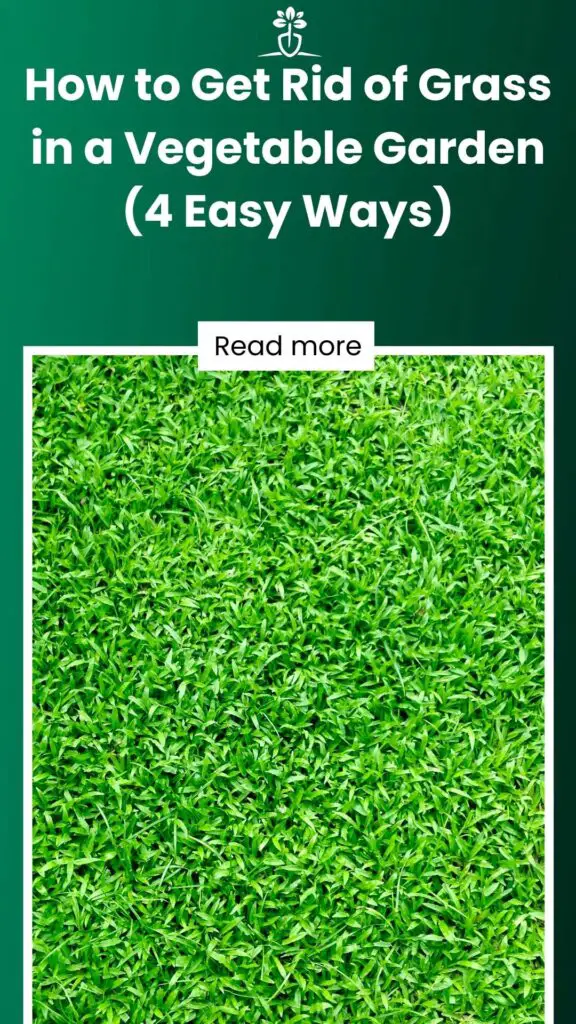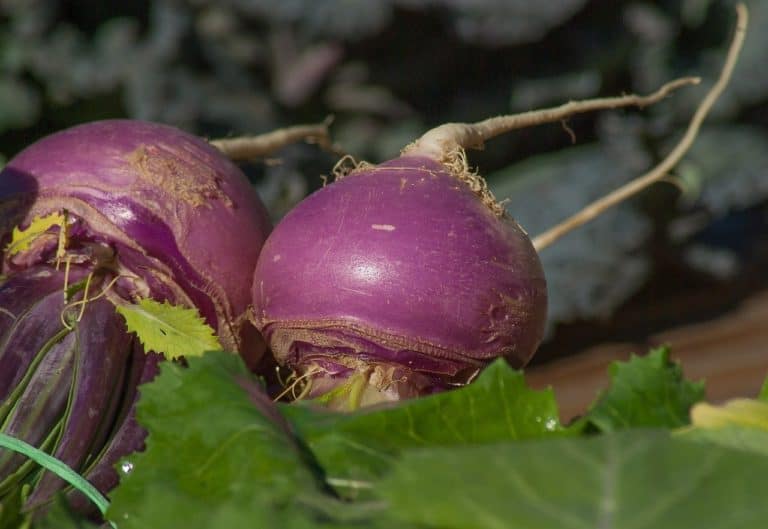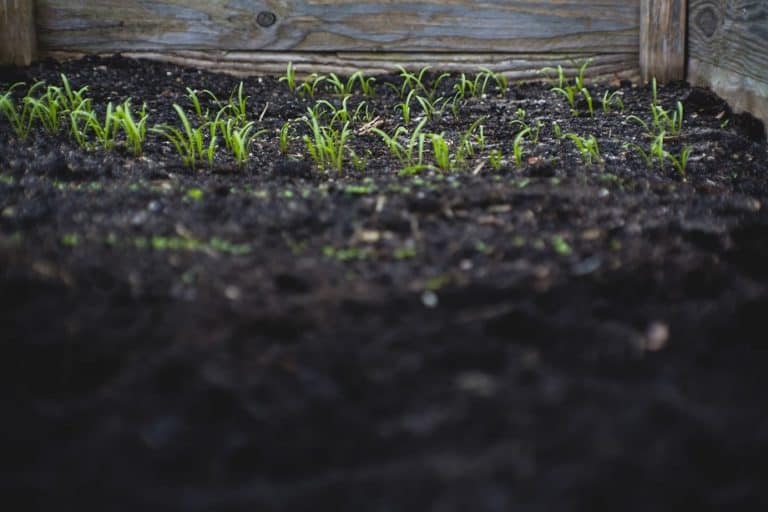How to Get Rid of Grass in a Vegetable Garden (4 Easy Ways)
Every lawn owner dreams of having a lush, green yard. But it gets really frustrating when **grass** starts creeping into the **vegetable garden**. Grass in the garden takes away all the nutrients that your veggies need to grow strong. It’s like trying to share a pizza with a bunch of hungry friends—there never seems to be enough for everyone. Save your garden and boost your veggies by keeping that grass at bay.
This article will discuss simple techniques to remove grass from your garden bed and provide a step-by-step guide for each method. Whether grass has taken over your garden or you’re thinking about starting your vegetable garden bed, this article is for you.
Read on for 4 straightforward methods you can adopt to get rid of grass from your garden bed.
Contents
Selecting the Right Method to Get Rid of Grass from a Vegetable Garden
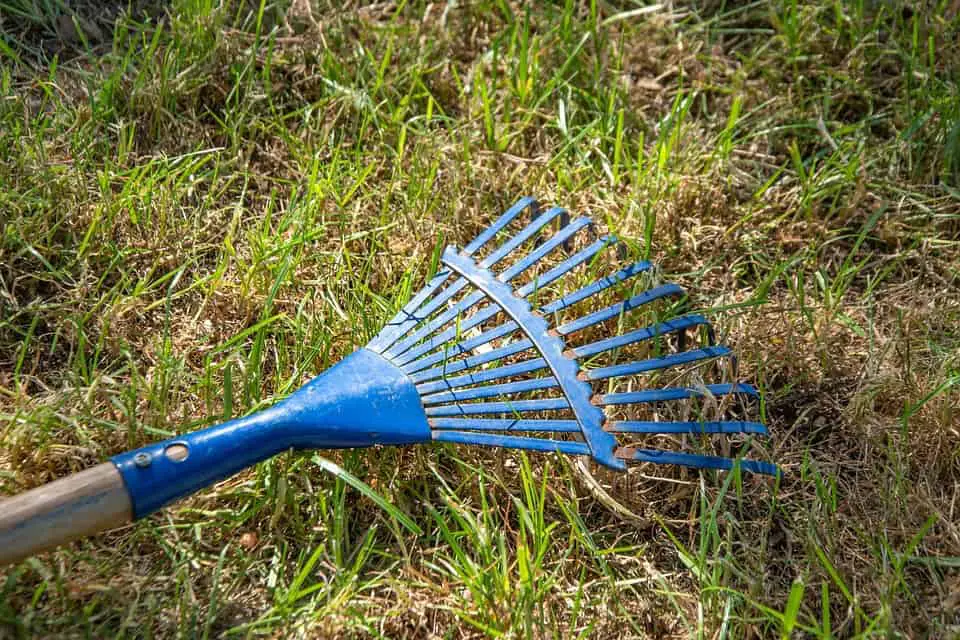
Vegetables require nutrients, an ample amount of water, and space to grow. Unwanted grass and weeds need the same. If not dealt with properly, unwanted grass and weeds can take up the required nutrients, stifling the vegetables and plants in the process. Thus, it is crucial to kill undesired grass and weeds in your garden area to promote the healthy growth of other plants.
You can choose various methods to remove grass and weeds from a garden bed. Usually, labor-intensive processes will give you quick results. Whereas you can opt for ways that do not require considerable effort, but you will need to wait at least a season before you can completely get rid of grass from a garden bed.
We have curated a list of four easy techniques that you can choose from, depending on how much work you want to do and how long you are willing to wait.
1. The Smothering Technique
The smothering technique is one of the easiest ways to kill grass in a garden. We prefer the method using cardboard, but you can also use layers of newspaper instead.
If you are looking to establish a new garden bed, define it using a hose, string, or rope. Remove any debris or rock you see on the surface and cut the grass to the ground.
If there are extensive weeds on the garden bed, layer it with unwaxed cardboard or up to 10 layers of newspaper. Make sure you use newspapers with no colored images. In the growing areas, overlap the sheet by 6 inches on the edges.
Layer the garden bed pathways with overlapped newspaper or cardboard to kill the grass. Cover the cardboard with bark chips. Once done, add a generous layer of rotten compost. Add at least a 3 – 4 inch thick layer of compost to keep the cardboard in a newspaper in place.
In a few months, any grass or weeds underneath the cardboard will rot and return rich nutrients to the soil. With little effort, you will have rich, loose soil ready to be planted.
Helpful Tip: If you have lumpy organic matter at planting time, use plug trays or pots to start the seedlings. Once they have sprouted roots, you can plant them in with correct spacing.
Pros
This technique is not labor-intensive and leaves the organic matter in place. It also does not disrupt the structure of the soil.
Cons
The smothering method requires several months to work. It is not feasible if you’re looking to plant immediately.
2. The Digging Method
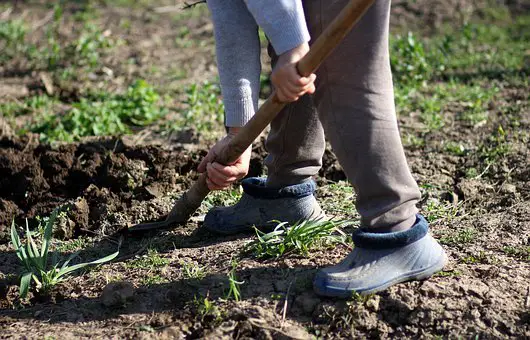
This method is the fastest way to get rid of the grass from a vegetable garden, but it requires a lot of muscle. You can remove the sod using a fork or a spade. Use the sod elsewhere in your lawn if it is in good condition.
To make the soil easy to work with, water the designated area a few days before digging. Make sure to limit the watering to avoid making the ground soggy. Saturated soil is heavy and difficult to dig. Moreover, it can also hinder plant growth.
Use a spade or an edger to cut the sod into 1-meter wide and 1 to 2-foot long strips. Turf density and thickness play an important role in deciding the length of the strips. Lift one of the sod strips by sliding the spade or fork under it. Lift out the pre-cut sod piece, ensuring to cut any taproots or fibrous grassroots underneath.
If there is too much loose soil under the sod, use a fork, ensuring the extra soil can move back into the surface. Roll the strips up and continue peeling from their back.
For a large garden bed, use sod cutters, which can be man-powered or gas-powered. You can rent these out as well. These are plow-like cutters with steel blades and work much more efficiently than a spade or a fork.
Once the sod has been lifted, remove any rocks, leftover grass chunks, and substantial roots. Remove any larvae or pests.
The process of digging causes organic material removal, which should be replaced as compost to promote healthy plant growth. Topsoil must also be replaced, especially if you want to raise the garden bed.
Pros
With this method, you can plant vegetables immediately. It is a non-chemical approach that does not require loud tools.
Cons
It is a laborious method, which requires a lot of effort. It removes the vegetative cover exposing the subsoil to weed seeds. It also removes organic material.
3. The Tilling Method
Gardening tools, such as a tiller, can be used to till or break up the soil.
As this method turns over the sod, the original organic material is not removed as it does with digging the sod.
Clean the garden area. There should be no rocks, debris, or garbage. Add organic matter using a shovel or a fork over sod before you till the soil.
Use a small tiller if you are dealing with a previously worked garden. For well-established turf grass, use a rear-tine tiller. Make more than one pass if required. Once you have tilled the needed area, remove all remaining grass clumps.
Tilling can propagate some weeds like quack grass and Canada thistle. Even though you can plant vegetables on tilled soil immediately, it would be wise to keep the soil damp and wait a few weeks. In this way, you can pull, hoe, or remove the weeds as they grow.
Helpful tip: When using a difficult-to-handle, large tiller, carve out the garden edge with a spade to mark a clear boundary.
Pros
This method allows immediate planting and is less laborious than digging. You can retain organic matter.
Cons
Tillers can be challenging to use on rocky or clay-like soils. This method also inadvertently propagates some weeds.
4. Use Herbicides
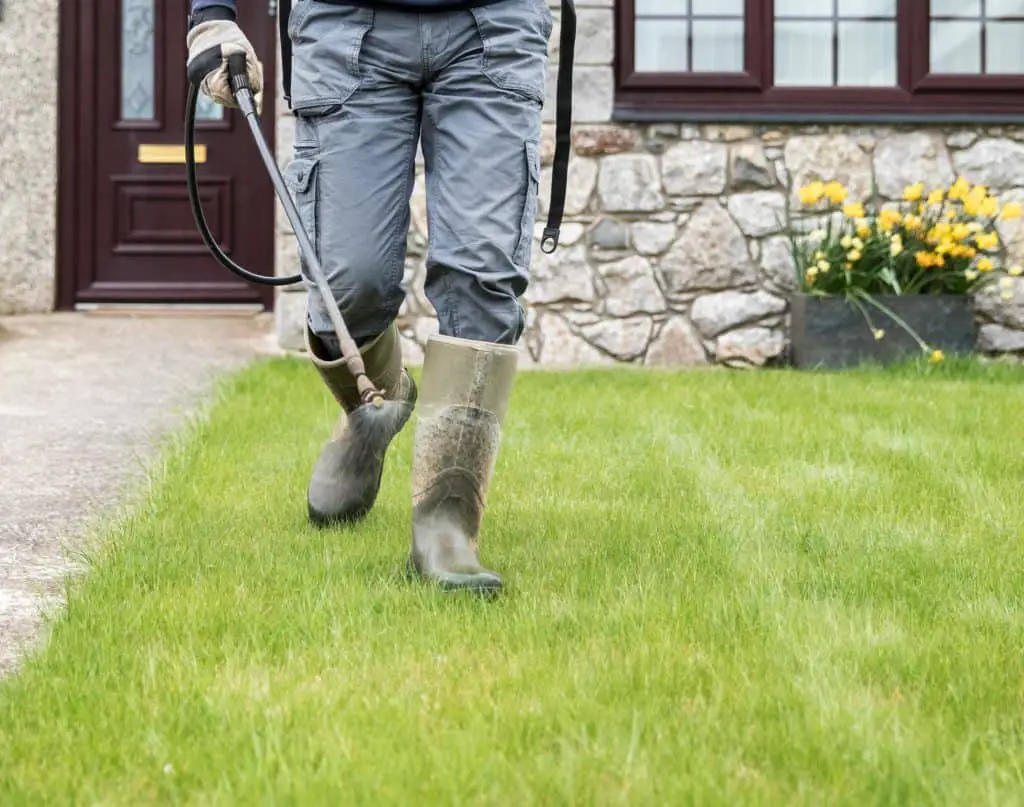
With the three methods mentioned above, you can readily see and rectify any damage you may have caused to the garden. However, that is not the case when you use herbicides. Any use of chemicals goes hand in hand with potential adverse effects that you may identify later.
Make sure you check the label and buy the appropriate herbicide that is used for killing grass. The herbicide should only kill grass and not broad-leaved plants.
Carefully go through the directions on the package and follow them religiously. Before you apply or spray any herbicides to kill grass, use protective clothing, gloves, and a mask.
Do not spray herbicides if there is any chance of rain. Rainwater can cause it to wash off into nearby soil and waterways. You should also restrict the application on windy days to stop the chemicals from drifting to neighboring plants.
Depending on the condition of the turfgrass, you may need to apply the herbicide more than once. You have to wait a few days for the herbicide to absorb correctly. The weed seeds and grass that were not affected in the first (or second) round may germinate later; therefore, you must be very thorough with your application.
Using herbicides is a viable option if you have the required safety equipment and follow the recommended instructions.
Pros
This method to kill grass is quick and straightforward for experienced gardeners who have previously worked with herbicides. It is relatively simple to remove or turn grass when using herbicides.
Cons
Using herbicides can result in unknowingly contaminating the environment or killing nearby plants. It is a potentially dangerous method and can result in serious personal injuries.
How to Get rid of Grass in a Vegetable Garden: Alternative Ways
While we have discussed removing unwanted grass in detail, you can adopt several other alternative methods. The following techniques also prove helpful if you want to kill grass in your lawn.
Conduct Solarization to Kill Grass and Weeds
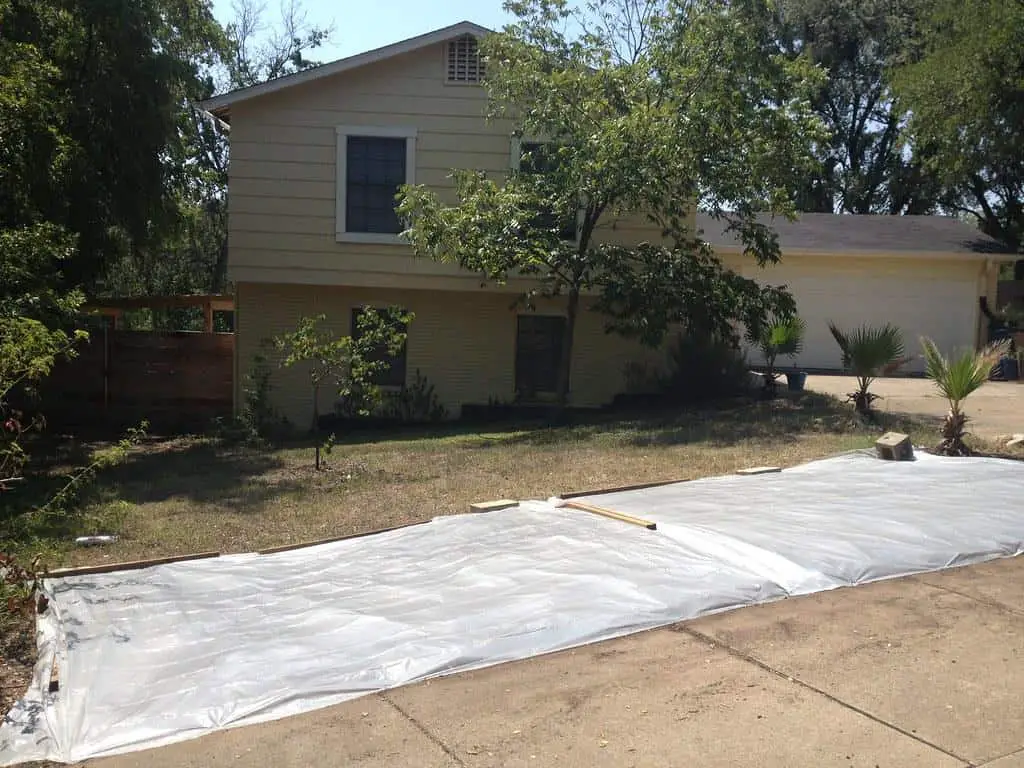
As the name suggests, the solarization method uses the sun’s power to burn off any unwanted grass and weeds in your garden. Solarization is a chemical-free way to kill grass and is best suited for the summer season when the sun is at its brightest.
Cut the grass very short and place clear plastic or dark plastic tarp over the designated lawn area. Hold it down using rocks or any other heavy object suitable for the job. The grass under the plastic will be burned off due to the sun’s heat and inadequate amount of air.
You have to allow about four weeks for your grass to scorch and begin the breaking down process.
Once the grass breaks down, you can dig it back in and add other required nutrients to plant healthy vegetables.
Since the clear plastic and tarp are not biodegradable, they will have to be removed later.
Use Vinegar to Kill Grass
Vinegar is excellent at removing notorious weeds and killing grass where required in your lawn. What makes vinegar work is acetic acid which lowers the pH of plants, ultimately killing them off.
Ensure you saturate only the area where you want to kill the grass to avoid harming other valuable plants.
Mix 32 ounces of apple cider vinegar with 4 ounces of lemon juice and pour the solution into a spray bottle. This concoction works best when the weather is hot. Generously spray the vinegar solution on unwanted grass and weeds till they are wholly doused.
The younger the weed leaves, the quicker vinegar would kill them off. For older weeds, you will have to reapply the mixture as required.
Use Boiling Water For Killing Grass
Something as simple as pouring boiling waters could help kill grass and allow you to grow plants in your garden. This method works for smaller areas since it has to be repeated several times before killing the grass.
Pour boiling water over the grass. Repeat the process until all of the grass turns brown and eventually dies. Repeat the application as frequently as you can to ensure all the grass is dead to its roots.
Use Mulch to Get Rid of Grass and Weeds
This is another easy way of getting rid of grass and weeds. This simple technique requires you to cover grass and weeds with at least 4-inch of mulching material.
A thick cover of mulch insulates the grass and blocks its exposure to sunlight. Lack of sun hinders the grass’s ability to germinate.
Keep in mind that using mulch can affect the soil’s temperature. Inorganic mulch material, like plastic, increases its temperature, which allows newly transplanted seeds or plants to grow healthy. On the other hand, organic mulch material like mature compost lowers its temperature, which works well for planting vegetable plants in summer and the scorching sun.
Steer clear of using sawdust as mulching material because it can strip the soil of nitrogen when breaking down.
Conclusion
With the knowledge mentioned above, you can easily remove grass and weeds from your garden bed and have it ready to plant your favorite vegetables. Selecting a suitable method to kill grass depends on your gardening experience, the availability of needed materials, and how much work you are willing to put in.
While some methods like digging and tilling require more work, they also offer instant results that immediately allow you to start planting vegetables. Whereas smothering requires minimal effort, you will have to wait months before your garden is ready to use.
So, select the method that is easiest for you to follow. Happy gardening!
